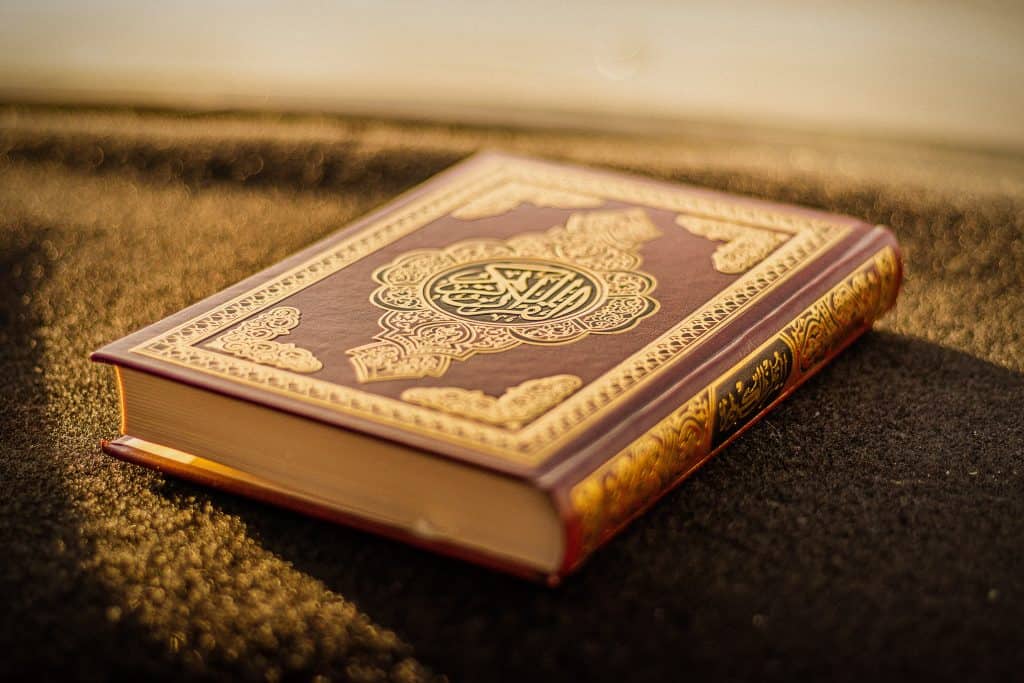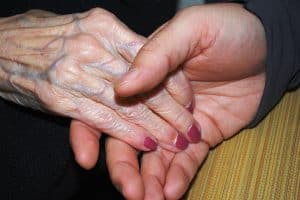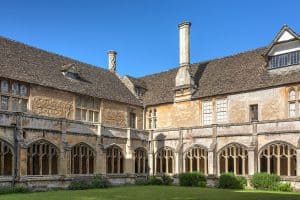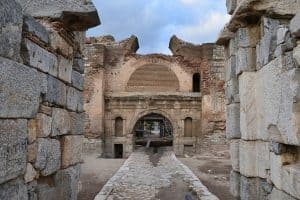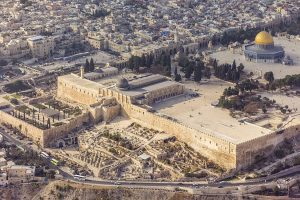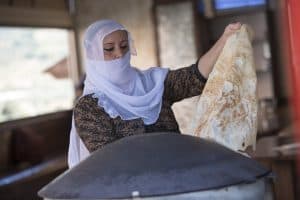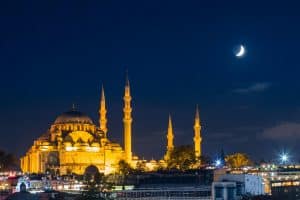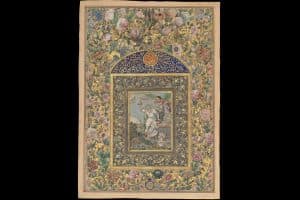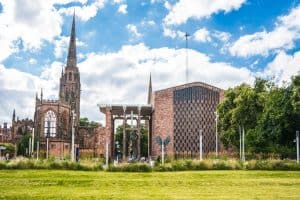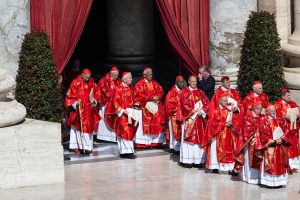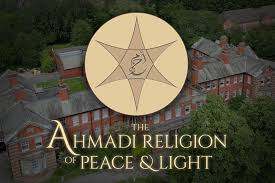By Dr Abdul-Azim Ahmed
There are at least 3.9 million Muslims living in the UK. As well as the familiar Sunni-Shia divide, British Islam is also home to a wide variety of traditions, streams, and denominations, many inspired by where communities initially emigrated to Britain
How many Muslims are there in Britain?
The 2021 census recorded 3.9 million Muslims, constituting 6.5 per cent of the overall population. This compares to figures from the 2011 census showing 2.7 million Muslims, which then constituted 4.8 per cent of the overall population.
What ethnicities are represented within British Islam?
The ethnic origin of Muslims is diverse. It is, in Britain, overwhelmingly south Asian but substantial and important components from the Middle East, Sudan and Somalia, and southeast Asia. There is also an increasing convert population, drawn both from White British and Black British populations.
The Muslim Council of Britain’s British Muslims in Numbers report by the academic Sundas Ali provides an in-depth breakdown of the 2011 census.
While it is dated now, it still provides the most reliable “big picture” description of British Muslims in terms of ethnicity, migration, nationality, socioeconomics, and geographic distribution.
How should we categorise British Muslim communities?
There are several important preliminary points to note, however. The first is that denominational or theological background is rarely predictive of behaviour among any religious group, but this is especially important to note among Muslims where there has historically been a tendency to rely on “religion” as an explanatory factor for Muslim behaviour over other factors (see Edward Said’s book, Covering Islam, for more on this).
The second important point to note is that intra-religious diversity among Muslims can sometimes be porous. So while some Muslims may have a strong denominational identity, others identify and participate with a range of theological currents within Islam.
Finally, Islamic theology has always been changing, but the contemporary period in Britain, even more so. For example, what it means to be a Salafi Muslim today is different from what it meant in the 1990s, and will likely be different again 30 years from now.
Branches, schools, denominations, sects or creeds?
In attempting to describe the diversity of Muslims, this particular factsheet will adopt a largely denominational approach — the emphasis will be on Muslims and the terms they use to describe themselves as “groups”. There are, however, other ways to examine the religious diversity of Muslims.
One approach might be to look at branches, or schisms. Here, there are three historic and one contemporary schism to consider.
Sunnis and Shias
The first, most influential and important schism, is that between Ahlus Sunna wal Jamaa and the Shiat Ali (Sunnis and Shias). This schism centres on the nature of religious authority.
For Sunnis, any pious and capable Muslim can lead. For Shias, a unique and special privilege of leadership was reserved for the family of the Prophet Muhammad, particularly Ali ibn Talib (the Prophet’s cousin and subsequently son-in-law) and his descendants.
The terms Sunni and Shia crystallised only in the 10th century of the Christian era, before which there was much more ambiguity over who was Sunni and who was Shia, and indeed many of the same figures are revered by both traditions.
Ibadi Muslims
The third schism are the Ibadi Muslims. This schism is also dated to the early days of Islam, but much less well known, partly because Ibadi Muslims are found almost exclusively in Oman today, and as such, their presence in Britain is linked to Omani Muslims.
There is very little written about Ibadi Muslims, but Valerie Hoffman’s 2012 book, The Essentials of Ibadi Islam, provides some important insights.
Ahmadiyya Muslims
The final schism, and a much more contemporary one, is that of the Ahmadiyya Muslims. They recognise a spiritual caliphate begun by Mirza Ghulam Ahmad (died in Lahore, 1908) who is considered both the promised Messiah and Mehdi. Importantly, Sunnis, Shias and Ibadis do not, thus forming the divergence.
The Ahmadiyya movement’s fifth caliph is based in London, from where he serves about 10 million Ahmadiyyas globally. As a result of historic links between Britain, the Ahmadiyya the population in the UK is second only to Pakistan, though there are no estimates on how many exactly but likely to be in the tens of thousands (for more information, see Simon Ross Valentine’s 2008 book, Islam and Ahmadiyya Jama’at).
Historically and today, Sunnis, Shias, and Ibadis mutually recognise each other as part of the Islamic tradition, Ahmadiyya theology is however is largely considered by other Muslims to fall outside the bounds of orthodoxy.
Islamic schools
Another common way in which Muslims can be described is through their adherence to particular schools of orthopraxis (correct practice). Within the Christian traditional, creed (belief) has often been used to assess the differences between groups, but among Muslims, creed is less important.
Within the Sunni tradition, you have the three dominant schools of creedal beliefs: the Ashari, Athari and Maturidi. Among the Shias, there is a greater diversity, with creedal schools such as the Ja’afari, or the esoteric Batiniyya.
By and large, however, these creedal differences remain issues of debate among scholars and the lay Muslim may be largely oblivious to them. What is much more important are the schools of orthopraxis (legal schools).
Within the Sunni tradition, these are the four traditional schools, Hanafi, Shafi, Maliki and Hanbali. Each of the four schools are named after their founder, who developed interpretative approaches to deciphering the link between sacred text and practice.
In Africa, the Maliki and Shafi schools are popular. In south Asia and southeast Asia, the Hanafi school is predominant. In the Middle East, one can expect to find each of the four schools. Salafism (see below) abandons the schools altogether, taking a more direct line to the text. Among Shias, the Jafari school is dominant.
The differences between these schools are largely based on methodology. The Quran instructs Muslims to pray five times a day, but the specific questions of how does one pray, at what times, with what words, are all answered by the schools of Islamic law.
Within Britain, almost all the divergent schools are present, but owing to migration histories, the Hanafi school is the most common — though Salafism has grown in recent years, particularly among younger Muslims.
Tradition and activism
There are further ways to understand differences among Muslims too. Whether the groups are politically activist (considering it a responsibility to oppose or resist political authority that is unjust or tyrannical) or quietist (considering it religiously mandatory to accept whatever political authority is in power, even if repressive) is one salient division, playing an important role in the past and today.
Another area of difference among Muslims is their view on tradition (here referring to established scholarship and orthodoxy) and whether they consider it necessary to dispense of tradition entirely (such as the Salafis or progressive Muslims), work with tradition in order to update it (sometimes described as “neo-traditionalists” or “modernists”) or to adhere to it strictly (“traditionalists”).
These various dimensions of Muslim diversity will indicate the broad questions of authority, politics, knowledge and practice important to Muslims. What follows, however, is a closer look at Muslim denominations, or the specific religious identities Muslims may belong to.
Deobandis
Deobandis are a south Asian Muslim tradition with origins in colonial India, who stress the preservation of the Islamic tradition through scholarly study and fidelity to religious law. They are arguably the most important actors within British Islam, especially today.
Although exact statistics are hard to determine, they potentially manage up to a third of the 2,000 or so mosques in the UK. They invested into and opened the first British-based dar ul-uloom (Muslim religious seminaries), educating imams and religious scholars in the British Isles as far back as the 1970s.
This means that by a significant margin, the majority of British-educated ulemas (Muslim scholars) are Deobandi, and as such, they are common in various fields of religious professionals (working as imams, counsellors, and chaplains).
Tablighi Jamaat
The Tablighi Jamaat are often associated with the Deobandi tradition: its founder, Maulana Muhammad Ilyas Kandhlawi (died 1944), was a graduate of a Deobandi dar ul-uloom . But Kandhlawi felt the values and virtues of the dar ul-uloom needed to be brought out of the seminaries and into the lives of ordinary Muslims, and so the Tablighi Jamaat took the scholarship of the Deobandis to the masses.
The Tablighi Jamaat stress personal religious piety achieved through a temporary monasticism, going on “khurooj”, short trips ranging from three days for four months, in which members of the group visit mosques locally and sometimes even globally.
The aim is to live a simpler life away from distracting luxuries, and to engage in worship and study, as well as preaching to other Muslims on the importance of Islam and its moral teachings. Barbara Metcalf, who has researched the Tablighi Jamaat, writes that it is the recreation of a sacred time that is important to the movement — the pristine and undiluted simplicity of the Prophet Muhammad’s life, through which the followers of the movement could achieve peace and salvation.
The Tablighi Jamaat has been described, with good reason, as the largest Islamic movement in the world. The Tabilighi Jamaat population of Britain is nestled within the Deobandi, but its success has attracted members from outside the Deobandi tradition also — particularly Salafi (more on that later).
Barelwis
Also originating from south Asia are the Barelwis. On the surface, they are remarkably similar to Deobandis. Both follow the same school of Islamic jurisprudence (Hanafi), both celebrate many of the same figures, both trace their origins to the Indian subcontinent, and both lay claim to Sufism.
The Barelwi, however, maintain passionate attachment to esoteric and mystical practices that the Deobandis consider as beyond the pale of religious orthodoxy.
Their close proximity to each other — in terms of theology and geographic origins — often leads to a tension between the two movements. For the Deobandis, the alim (the scholar), is the fount of all religious wisdom. For the Barelwi, it is the pir (a living saint).
Fultolis
The Bangladeshi Fultoli tradition has often been confused with the Barelwi, largely due to some shared religious practices. The Fultolis, however, are distinct from the Deobandis or the Barelwis, but emerged out of the vibrant and highly charged religious public sphere of India under the Raj, in which calls for religious reforms had both urgency and political relevance.
Pakistanis and Bangladeshis make up the bulk of the British Muslim population, and so Deobandis, Barelwis, and Fultolis constitute a large part of the denominational identity of British Muslims.
Jamat i Islami
More distinct from Deobandis, Barelwis and Fultoli Muslims are the Jamat i Islami, an Islamic reform movement, once again with links to colonial India, that consider the personal religious and spiritual devotions of Deobandis and Barelwis lacking.
Jamaat Islamiyyah is an anti-colonial movement, and thus has a focus on political activism. They consider the Quran’s social message to be central, one that should bring Muslims out of the mosques and into public life.
To revive Islam, in the Jamaat Islamiyyah view, is to engage to reform and improve social welfare and government. In this regard, they share much with the Middle-Eastern Ikhwaan al-Muslimoon (or Muslim Brotherhood).
Maulana Mawdudi (died 1979), the founder of the Jamat i Islami, introduced a distinctive idea that amalgamated the thoughts of many others before. He had witnessed the success of the nation state, and reasoned that the only way to truly achieve success against colonial imperialism was the establishment of an Islamic nation state. Mawdudi was thus an important voice in the shaping of both Pakistan and Bangladesh, and though he initially opposed the partition of India, he soon became embroiled in political life.
Jamat i Islami has grown beyond Mawdudi, however, taking the vision of a social gospel worldwide, especially in Britain where members of the group have set up charities, mosques and Islamic welfare organisations. In Britain there is no official branch of Jamat i Islami, but its vision and teachings have been pursued by organisations described various as “Jamaat-related” or “JI-inspired” by academics.
The United Kingdom Islamic Mission is foremost among these. However, its more recent influence has waned, being overtaken by other national bodies such as the Muslim Council of Britain. Other groups often linked with Jamat i Islami, for example, the Islamic Foundation in Markfield, Leicestershire, have also developed in their own direction in recent decades, emphasising the constantly changing aspect of denominational identities.
The Muslim Brotherhood
Over half of British Muslims have a south Asian heritage, but Middle-Eastern reform movements such as the Muslim Brotherhood play a significant role among British Muslims of Arab heritage, and by gaining new followers from other backgrounds.
I have already compared the Muslim Brotherhood to Jamat i Islami, but, arguably, the brotherhood has been more successful. The founder, Hasan al-Banna, led a religious revival in Egypt before the Second World War, attracting young followers through preaching an Islam removed of elitism and sectarianism that had become prevalent in parts of Egyptian society at the time.
Al-Banna stressed unity and egalitarianism, while increasingly viewing the military dictatorship of Egypt as a stumbling block to true religious and social reform, thus politicising the movement. The Muslim Brotherhood’s vision was always diverse and often far-reaching, and so the brotherhood in Britain is largely represented through welfare organisations, youth groups and educational institutions.
Hizb ut-Tahrir
Another politically orientated group is the Hizb ut-Tahrir. While the Jamat i Islami and the Muslim Brotherhood combine traditional expressions of Muslim piety with their political activism, the Hizb ut-Tahrir consider politics a primary religious duty, and in particular, the re-establishment of the caliphate.
They are the prototypical “Islamists”, and while having never been involved in violent extremism in Britain or elsewhere, their deeply antagonistic position towards every government often brings them under heavy political persecution at worst, and restriction at best.
The Hizb ut-Tahrir are not numerous in Britain — the numbers are perhaps at most in the thousands — but their active political campaigning and incendiary message has raised their profile and influence.
What about Islamism?
The term “Islamist” has often been used to describe the Jamat i Islami, the Muslim Brotherhood, and Hizb ut-Tahrir. It is a very debated term, however.
On one hand, it has been increasingly used (and often misapplied) in political and policy circles to describe “bad Muslims”. It also suffers from often contradictory definitions (ie translating it as “political Islam”) or defining it so broadly that it loses its lexical value. In general, the Associated Press Stylebook guidance on Islamism is worth repeating:
Islamist — “An advocate or supporter of a political movement that favours reordering government and society in accordance with laws prescribed by Islam. Do not use as a synonym for Islamic fighters, militants, extremists or radicals, who may or may not be Islamists. Where possible, be specific and use the name of militant affiliations: al-Qaeda-linked, Hezbollah, Taliban, etc. Those who view the Quran as a political model encompass a wide range of Muslims, from mainstream politicians to militants known as jihadi.“
– Associated Press Stylebook
Salafis
The final, and significant, Sunni religious denomination to mention are the Salafis. Salafism traces its origins to Saudi Arabia as well as to historic reformers such as Muhammad Abduh (died 1905) and Ibn Taymiyyah (died 1328) — though each figure represents very different currents within contemporary Salafism.
Salafis differ from their co-religionists through the stress on recreating a pure Islam, free from any “cultural” influences or heresy. To achieve this, they place an emphasis on the religious scripture (the Quran and the hadith — the narrations of the Prophet Muhammad) over the traditions of Islam (the schools of jurisprudence and other sciences).
In a reform that has echoes of the Protestant schism, Salafis insist individuals must have a personal relationship with the Quran and the traditions of the Prophet, the Sunnah, to recapture of the pristine Islam practised by the earliest Muslims — the “Salaf” (literally, the predecessors).
The simplicity of the Salafi message and its stress on scripture resonate well with western-educated and literate young Muslims, leading Salafism to be one of the fastest-growing Islamic movements in Britain.
Shia denominations
Among Shias, the predominant group is the Ithna Asharis, the Twelvers — called such for their recognition of 12 Imams who are the divinely decreed successors after the death of the Prophet Muhammad.
There are also the minority Ismailis, and the even rarer Zaydis. Though all have a presence in Britain, the Ithna Ashari, hailing from both Pakistan and Iran, are the most populous both in the United Kingdom and globally.
Are there myths about British Muslims that need to be busted?
So with a rough overview of British Muslim groups, there are some misconceptions to clear up. The first is the Sunni-Shia split.
The caricature is that that Sunnis and Shias are at war, and hold irrevocable animosity against each other, especially in the Middle East. This view, however, reduces complex geopolitical wrangling into a battle over theology. Thankfully, the idea has slowly been abandoned.
Both Sunnis and Shias generally recognise each other as part of the Islamic tradition, a significant fact that is all too often overlooked. In some places around the world, Sunnis and Shias coexist peacefully and without incident. In other places, there may be distance, but a cool one.
Of course, in some places the identity markers of Sunni and Shia are loaded with antagonism and political consequence, most clearly seen now in Syria and Iraq. Sunni and Shia relations in the contemporary era, much like the historic, are diverse and not always as troubled as some like to make out.
How does Sufism fit in?
The second myth is about Sufism. Sufism is sometimes mistakenly described as a separate sect or movement within Islam that has somehow broken away from the mainstream. This is not the case.
Rather, Sufism is usually considered as one of the dimensions of Islam, and thus it is present in some denominations and not in others. Instead of being a separate movement, it is more characteristic of an approach that includes a range of practices, some uniquely Sufi, some practised and maintained by all Muslims.
There are Sunni Sufis as well as Shia Sufis. Both Deobandis and Barelwis lay claim to Sufism. Only Salafism considers Sufism as an aberration, but again, there will be shared practices and understanding. Sufism is something that, in most cases, transcends denominations.
Can we divide Muslims into moderates and extremists?
The final myth is the good Muslim/bad Muslim stereotype. Some labour under the impression that there are moderate Muslims and extreme Muslims, and that the extreme Muslims come from one particular sect of Islam. It’s a consequence of the way in which violent extremism has been tied to ideology. As Dr Matthew Francis, researcher into radicalisation, has said: “There are radicals that aren’t terrorists, but you also have terrorists who are not radical.”
From what we know of violent extremists in Britain, they are usually not deeply religious, and so do not identify strongly with any denomination. If you do trace a denomination, you have to work backwards from their parents or their friends — which is often neither helpful nor telling.
There are examples of individuals who have been engaged in violent extremism from Salafism as well as Sufism. It’s common for Salafism to be blamed as the “bad Islam”, with its historic links to Saudi Arabia and similarity to the textual insistence of Christian fundamentalists. But while being more religiously conservative, Salafis in Britain have been at the forefront of challenging extremism and radicalisation, working with government bodies and the counter-extremism project Prevent to do so.
Likewise, it’s easy to think of Sufism as the “peaceful”, “liberal” Islam, but this, too, can be mistaken. In 2011, Salman Taseer, a Pakistan politician who opposed the blasphemy laws, was assassinated by a Sufi Muslim from the Barelwi tradition.
It is simplistic to think of radicalisation and extremism as being tied to a single religious group, and this idea has to be abandoned to understand British Muslims successfully. This misconception sometimes manifests itself as conflating the conservatism of certain groups, such as Deobandis and Salafis, with violent extremism.
The profile and background of most violent extremists is a lack of religious knowledge alongside involvement in crime, drugs and the universally accepted Islamic vice, alcohol. Violent extremists tend not to be religious conservatives.
Mosques and religious identity
Although the first mosque in Britain was already established in 1889 in Woking, the establishment of larger numbers of mosques began in the 1960s. There are currently 1700 mosques in Britain, which might be a converted terrace home, a larger converted church or community hall, or purpose built larger mosques with congregations of several thousand.
Mosque communities are usually formed of three constituent parts: the imams, or the religious leadership, the committee and managers who are responsible for the running of the mosque and finally the congregation. Mosque employees are few. In most mosques it may be one or two imams, working part time. Larger mosques may have teaches, administrative staff and outreach officers
Mosques are sites of key rituals. The daily prayers, from early morning to ate evening, marriage ceremonies, funeral prayers and occasional festivals. Larger mosques will hold a range of activities including youth groups, open days and interfaith activities.
British mosques have generally emerged from the networks Muslims had access to as they settled in the United Kingdom. These networks were often along ethnic and denominational lines. As such, the trustees, management, and religious leadership of a mosque are very often mono-denominational (and sometimes even mono-ethnic).
The congregations, however, are very often diverse. In choosing a mosque to attend, accessibility, language, facilities, and services are usually more salient factors for Muslims than denominational identity. In turn, many mosques adopt a broad ecumenical approach that accommodates their congregation.
A smaller number of mosques may have a strong denominational identity, however, acting as the British or regional headquarters for an Islamic movement.
What Muslim organisations are there in Britain?
As the survey above should indicate, British Muslims are diverse in many ways. This diversity, owing to the migration and settlement history of British Muslims, is greater than one would find in Muslim-majority countries.
National organisations, to operate successfully, must generally adopt an ecumenical and transdenominational approach. As such, groups like the Muslim Council of Britain have affiliates from across the religious spectrum, including Sunni and Shia groups. The same is often true of regional organisations, such as local councils of mosques, or specialised representative groups, such as the Federation of Student Islamic Societies, the Association of Muslim Schools, or the Muslim Charities Forum.
The Board of British Scholars and Imams, a recently launched network of religious scholars, is currently a Sunni-only organisation, but which has members representing nearly all denominations present in Britain. Present in the board are denominational networks of scholarship, such as the Wifaq ul-Ulema, a British Deobandi group of senior scholars.
Charities, such as Islamic Relief, Muslim Aid, Human Appeal, and so on, tend to sidestep issues of theology, appealing to a shared religious identity as Muslims. This is also true of campaign groups, such as the Mend (Muslim Engagement and Development), the Muslim Women’s Network, or the Muslim Census.
There remain organisations that are closely tied to their denominational identity. The UK Islamic Mission is often closely tied with the Jamat i Islami, likewise the al-Khoei Foundation is strongly linked with Shia Ithna Ashari Muslims.
Schools and seminaries producing Islamic scholars most prominently display a denominational identity. In addition to the numerous Deobandi dar ul-ulooms, there is the traditionalist Cambridge Muslim College (headed by Professor Timothy Winter), the modernist London Muslim College, or the al-Mahdi Institute, a leading Shia higher educational institute and seminary.
This abbreviated description of British Muslim diversity is truncated, but like a medieval map of the globe, it should at least provide some orientation. The landscape is constantly in flux, however. Most British Muslims will not belong to and derive their religious understandings from only one denominational source, but will engage with many. This, along with new and emerging religious scholarship in Britain, means the denominational maps are being redrawn even as we speak.
Dr Abdul-Azim Ahmed is the deputy director of the Centre for the Study of Islam in the UK at Cardiff University

